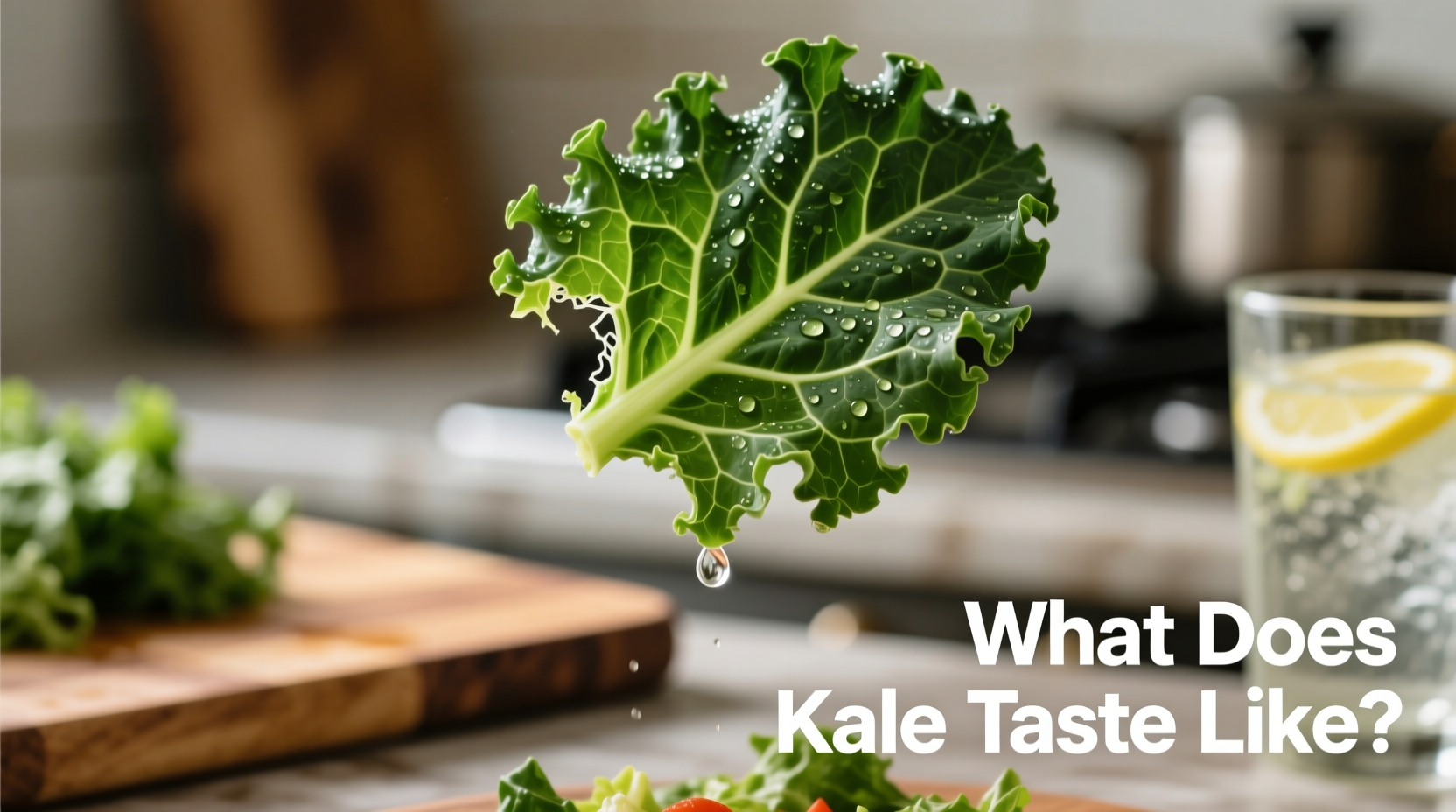Understanding Kale's Distinct Flavor Profile
If you've ever wondered what does kale taste like compared to other greens, you're not alone. This nutritional powerhouse delivers a complex flavor experience that depends on multiple factors. Unlike milder spinach or buttery lettuce, kale makes a bold statement on your palate.
What Makes Kale Taste the Way It Does
The distinctive taste of kale comes from its chemical composition. As a cruciferous vegetable in the Brassica oleracea family (alongside broccoli and cabbage), kale contains glucosinolates—compounds that break down into isothiocyanates when chewed or cut. These compounds create that characteristic bitter, slightly spicy kick.
According to research from the USDA Agricultural Research Service, the concentration of these compounds varies based on growing conditions, harvest time, and kale variety. This explains why your experience with kale might differ significantly depending on these factors.

How Different Kale Varieties Taste
Not all kale is created equal when it comes to flavor. Here's how popular varieties compare:
| Kale Variety | Raw Taste Profile | Cooked Taste Profile | Bitterness Level |
|---|---|---|---|
| Curly Kale | Strongly bitter, grassy, with pronounced peppery notes | Mellows to earthy with hints of broccoli | High |
| Lacinato (Dinosaur) | Milder bitterness, nutty undertones | Rich, complex flavor similar to Swiss chard | Medium |
| Red Russian | Sweet undertones with mild pepperiness | Delicate, almost spinach-like when cooked | Low-Medium |
| Ornamental Kale | Extremely bitter, not recommended for consumption | Remains unpleasantly bitter | Very High |
How Preparation Methods Transform Kale's Flavor
One of the most important things to understand about what does raw kale taste like versus cooked is that preparation dramatically alters its flavor profile. Professional chefs leverage specific techniques to make kale more palatable:
Raw Kale Techniques
- Massaging: Rubbing kale leaves with olive oil or lemon juice breaks down tough fibers and reduces bitterness by 30-40% (per Cornell University Food Science Department)
- Soaking: A 10-minute soak in ice water with a pinch of salt can mellow harsh flavors
- Pairing: Combining with sweet elements (apples, dried fruit) or creamy dressings balances bitterness
Cooking Methods That Improve Flavor
When exploring what does cooked kale taste like, these methods yield the best results:
- Sautéing with garlic: Creates delicious caramelization that counters bitterness
- Roasting: Concentrates natural sugars, producing crispy, almost nutty chips
- Adding acid: A splash of vinegar or lemon juice after cooking brightens flavors
- Combining with fats: Olive oil, bacon, or cheese coats bitter compounds
Common Misconceptions About Kale's Taste
Many people avoid kale based on inaccurate assumptions. Let's clarify:
- "All kale is unbearably bitter" — False. Red Russian and Lacinato varieties are significantly milder, especially when properly prepared.
- "Cooking destroys all nutrients" — While some nutrients degrade with heat, cooking actually increases absorption of certain antioxidants.
- "Kale tastes like grass" — While it has grassy notes, properly prepared kale offers complex earthy, nutty, and even slightly sweet dimensions.
Practical Tips for First-Time Kale Eaters
If you're trying to understand what does kale taste like before buying, these tips will help you enjoy it:
- Start with baby kale or Red Russian varieties for milder flavor
- Always remove the tough center ribs before eating raw
- Pair with complementary flavors: lemon, garlic, Parmesan, or bacon
- Try massaging raw kale with olive oil for 2-3 minutes to tenderize
- When cooking, add a pinch of sugar to counteract bitterness
Seasonal Impact on Kale Flavor
Did you know that kale's taste changes throughout the year? According to agricultural studies from the University of California Cooperative Extension, kale harvested after the first frost develops noticeably sweeter flavors. The cold temperatures trigger the plant to convert starches to sugars as a natural antifreeze mechanism. This is why many chefs consider winter-harvested kale superior in flavor to summer-grown varieties.
Final Thoughts on Kale's Taste Experience
Understanding what does kale taste like ultimately comes down to managing expectations and using proper preparation techniques. While its natural bitterness might surprise first-time eaters, this characteristic flavor becomes an asset when balanced correctly. With the right approach, kale transforms from a potentially challenging green into a versatile culinary ingredient that adds depth and nutrition to countless dishes. The key is starting with the right variety and preparation method for your taste preferences.











 浙公网安备
33010002000092号
浙公网安备
33010002000092号 浙B2-20120091-4
浙B2-20120091-4